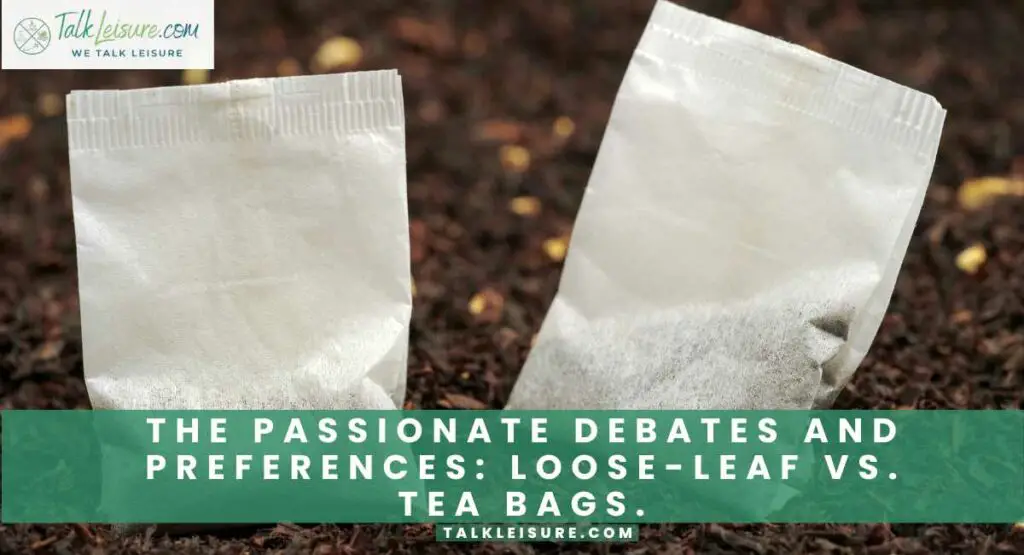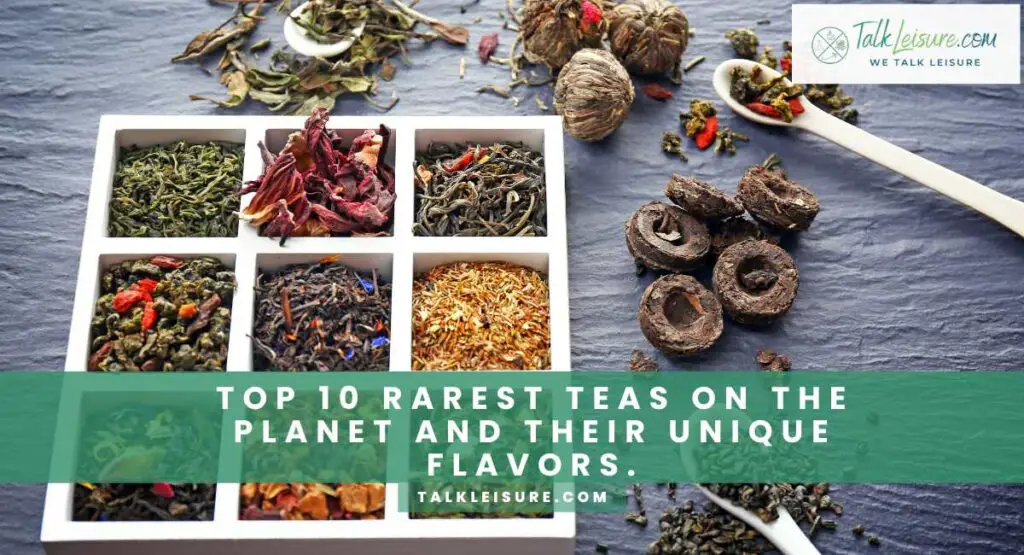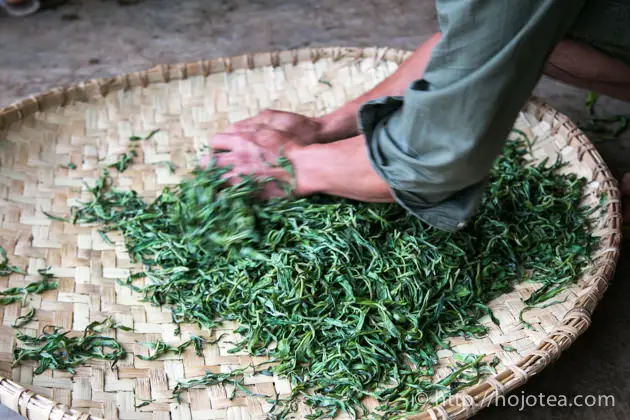Welcome to the enchanting world of floral teas, where every sip unfolds a story and each petal holds a secret.
In this aromatic journey, we’ll delve into the rich tapestry of jasmine, dance with the delicate essence of roses, and savor the calming notes of chrysanthemums.
Embark with me on a sensory expedition through the gardens of flavor as we explore the history and cultural allure of floral teas.
Also read: A guide to tea tasting: Developing your palate and vocabulary.
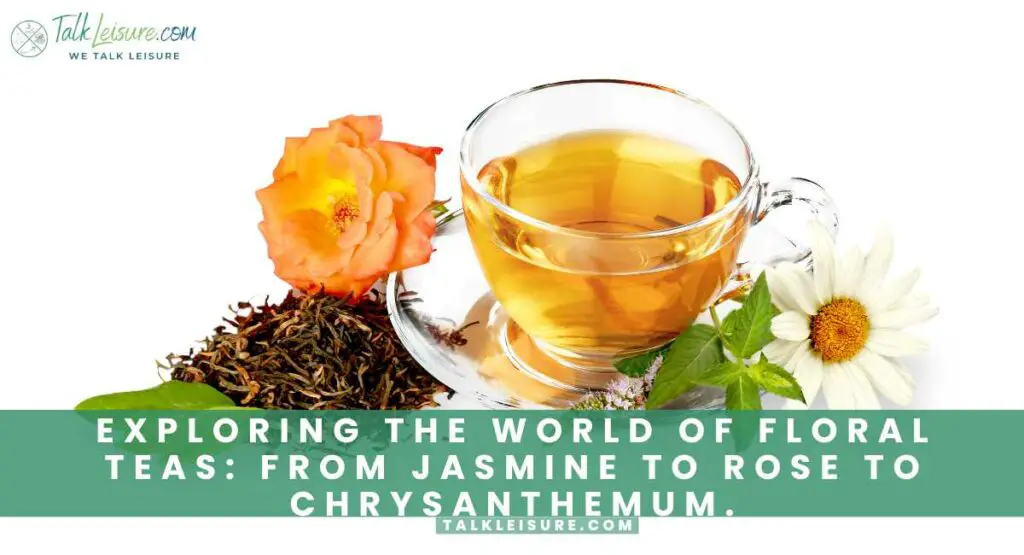
Unveiling the Floral Tapestry
Picture this: ancient tea gardens, where the air is perfumed with the sweet whispers of blossoms. Floral teas aren’t just beverages; they’re time capsules transporting you to eras when the delicate art of tea-making was intertwined with cultural rituals and timeless traditions.
In these gardens, tea isn’t just a drink; it’s a ceremony, a celebration of nature’s finest creations. Whether it’s the delicate fragrance of jasmine or the romantic allure of rose petals, each cup tells a tale.
A Symphony of Health and Flavor
But floral teas are not just about sensory indulgence; they bring a bouquet of health benefits too. Dive into the sea of antioxidants, where every sip becomes a wellness ritual. From supporting digestion to soothing stress, floral teas aren’t just beverages; they’re a holistic embrace for your senses and well-being.
So, why settle for the ordinary when you can elevate your tea experience to an aromatic symphony of taste and vitality?
Join the Floral Tea Revolution
In this blog series, we’re not just talking tea; we’re unraveling a world where jasmine, rose, and chrysanthemum aren’t just ingredients—they’re characters in a grand narrative. So, grab your favorite mug, cozy up in your favorite spot, and let’s embark on a journey through the gardens of floral delights.
Are you ready to sip, savor, and discover the world of floral teas? Buckle up; it’s going to be a fragrant ride!
Also read: The heartwarming stories of family tea traditions from around the world.
Health Benefits of Floral Teas
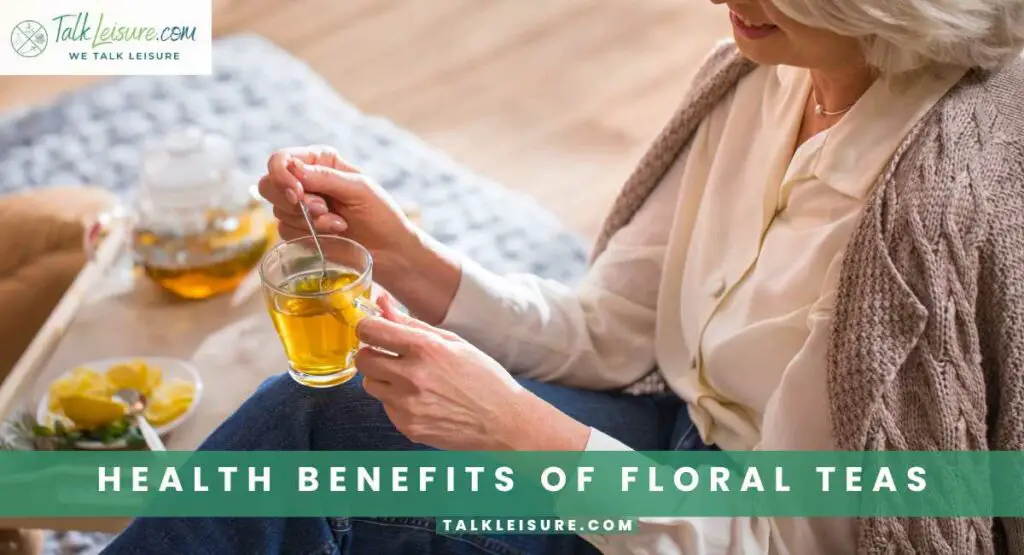
In this aromatic adventure, we’re not just indulging our taste buds; we’re nourishing our bodies and souls. Floral teas aren’t just charming companions for your quiet moments; they’re wellness elixirs that come adorned with an array of health benefits.
Antioxidant Properties: The Guardian Petals
Step into the world of antioxidants, where floral teas shine as the unsung heroes of well-being. Imagine each sip as a tiny army of protective petals, combating the free radicals that dance through our bodies.
Whether it’s the jasmine’s delicate embrace, the rose’s vibrant hues, or the chrysanthemum’s gentle bloom, each flower contributes its unique antioxidants, bestowing upon you a shield against the wear and tear of daily life.
Digestive Health: A Floral Soothe
Floral teas aren’t just about flavor; they’re also your digestive system’s best friend. Journey through the calming meadows of chamomile or the spirited dance of peppermint, and you’ll find nature’s remedies for indigestion and bloating.
These teas work in harmony with your digestive system, offering a soothing balm after a hearty meal or during moments of stomach unease.
Stress Relief: Petals for Peace
In the hustle and bustle of our modern lives, stress is a constant companion. But fear not; the world of floral teas has a remedy. Allow the aromatic notes of jasmine, rose, or chrysanthemum to transport you to a realm of tranquility. These teas aren’t just beverages; they’re serenades for your nerves, a gentle reminder to breathe and find calm amidst the chaos.
In the next few sips of your favorite floral blend, you’ll discover that these teas aren’t just pleasing your palate; they’re contributing to your overall well-being.
So, let’s raise our cups to health, happiness, and the harmonious blend of nature’s finest blooms. Cheers to the petals that not only delight our senses but also nurture our bodies!
Also read: The mesmerizing process of hand-rolling artisanal tea leaves.
Popular Types of Floral Teas
In this segment of our floral odyssey, we’ll waltz through the gardens of specific floral teas—each with its own tale, flavors, and unique attributes.
Jasmine Tea: The Fragrant Symphony
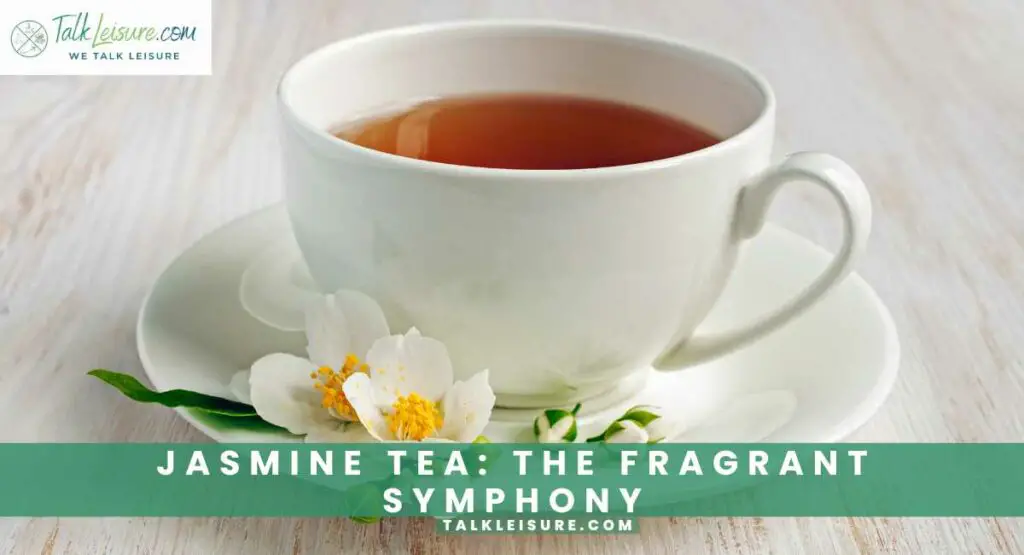
Origins and Cultivation:
Jasmine tea, a fragrant symphony in a cup, traces its roots back to ancient China. Born in the Fujian province, this delicate tea is crafted by layering jasmine blossoms with green tea leaves. The meticulous process infuses the tea with the sweet, intoxicating essence of jasmine.
Flavor Profile and Aroma:
Close your eyes as you take that first sip, and let the floral notes transport you. Jasmine tea, with its subtle sweetness and a hint of earthiness from the green tea base, creates a harmonious melody on your palate. The aroma alone is a sensory journey—invigorating, soothing, and simply enchanting.
Health Benefits:
Beyond its captivating taste and aroma, jasmine tea brings health to the forefront. Rich in antioxidants, this brew has been linked to promoting heart health, reducing stress, and even aiding in weight loss. Sip by sip, jasmine tea weaves a tale of wellness.
Rose Tea: Elegance in Every Petal
History and Symbolism:
Step into the world of romance with rose tea, a brew that has adorned cups for centuries. Historically cherished for its association with love and beauty, rose tea has been sipped in ceremonies and celebrations across cultures. The petals, beyond their aesthetic appeal, carry a story of passion and elegance.
Floral Notes and Flavor Combinations:
Take a sip, and let the floral notes of rose petals dance on your tongue. The taste is gentle, slightly sweet, and oh-so-elegant. Experiment with flavor combinations; perhaps pair it with a touch of honey or a twist of citrus to elevate the experience.
Beauty and Skincare Benefits:
But the allure of rose tea isn’t limited to taste alone. It’s a beauty potion in a teacup, believed to contribute to radiant skin and a healthy complexion. Sip your way to a glow as timeless as the petals themselves.
Chrysanthemum Tea: Blossoms of Wellness
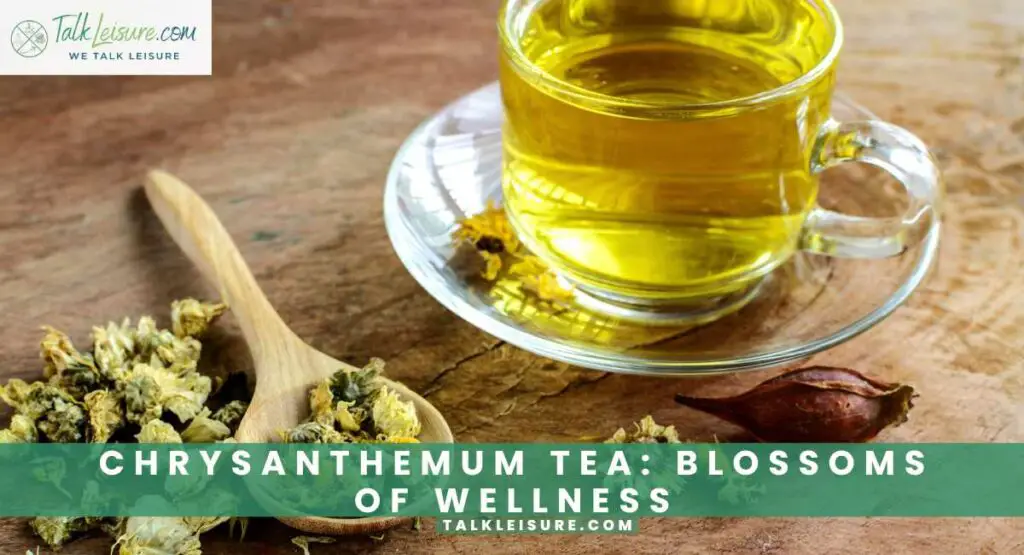
Traditional Uses and Cultural Significance:
Chrysanthemum tea, a treasure from the East, has deep cultural roots. In Chinese tradition, it’s not just a beverage; it’s a symbol of rejuvenation and vitality. Enjoyed during festivities and rituals, chrysanthemum tea holds a special place in hearts and teacups.
Light and Refreshing Flavor Profile:
Pour yourself a cup, and experience the light, floral embrace of chrysanthemum tea. Its delicate taste, akin to a sunlit garden, is a refreshing departure from more robust teas. Perfect for those moments when you crave a gentle, floral caress.
Wellness Benefits:
Yet, there’s more to chrysanthemum tea than meets the eye. Known for potential immune-boosting properties, this brew isn’t just a delight for your taste buds; it’s a gesture of wellness. Revel in the goodness as you sip your way to a healthier, more vibrant you.
As we unfold the petals of each tea variety, may you find your cup brimming not just with flavor but with the rich stories and benefits that these floral infusions offer. Cheers to the diverse world of floral teas!
Chamomile Tea: The Soothing Elixir
Origins and Cultivation:
Chamomile, with its dainty white flowers resembling tiny daisies, has been a comforting presence in the world of teas for centuries. Originating from Europe, North Africa, and Asia, chamomile tea is often crafted from the dried flowers of the Matricaria chamomilla plant.
Flavor Profile and Aroma:
As you steep chamomile flowers in hot water, a gentle apple-like fragrance fills the air. The taste is a soothing symphony of mild sweetness and herbal notes. Known for its calming properties, chamomile tea is a warm hug in a cup, perfect for winding down after a hectic day.
Health Benefits:
Renowned for its sleep-inducing and digestive properties, chamomile tea is a go-to remedy for relaxation. It’s an ally for those seeking tranquility, promoting better sleep, and easing digestive discomfort. Sip, unwind, and let the calming embrace of chamomile envelop you.
Lavender Tea: A Fragrant Ballet
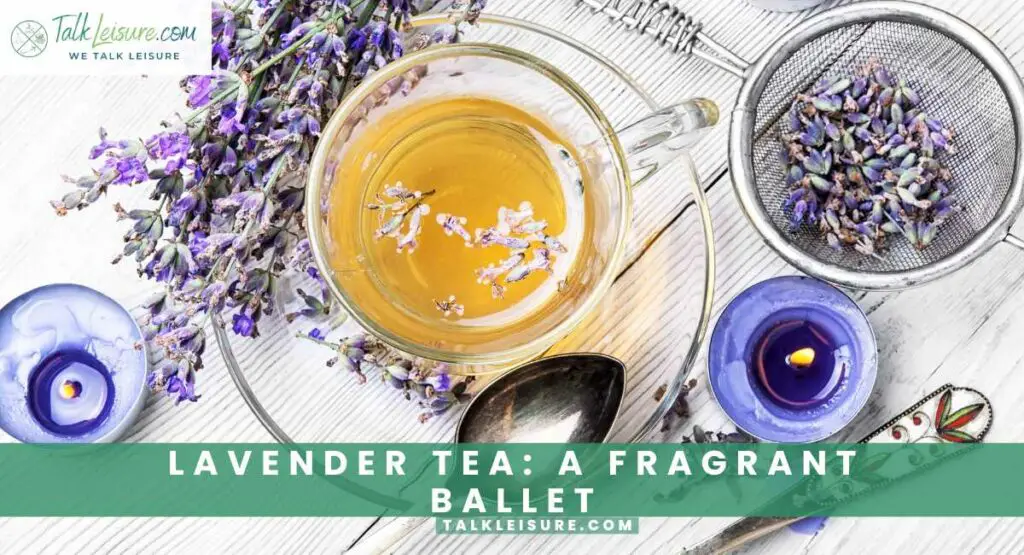
Origins and Cultivation:
Lavender, celebrated for its enchanting aroma, finds its way into the world of tea from the lavender plant, Lavandula angustifolia. Native to the Mediterranean, this purple-hued herb graces gardens and teacups alike.
Floral Notes and Flavor Combinations:
Brewing lavender tea releases a fragrant floral bouquet. The taste is delicate, with subtle notes of mint and a hint of citrus. Lavender tea is versatile, allowing for creative flavor pairings. Experiment with a touch of honey or a slice of lemon to enhance its delightful essence.
Wellness Benefits:
Beyond its aromatic allure, lavender tea is known for its potential to ease stress and promote relaxation. A cup of lavender tea is not just a beverage; it’s a sensory retreat, inviting you to unwind and find serenity.
Hibiscus Tea: Vibrancy in Every Sip
Origins and Cultivation:
Hibiscus tea, made from the vibrant petals of the Hibiscus sabdariffa plant, traces its origins to tropical regions. The striking crimson hue and tangy flavor make it a captivating addition to the world of floral teas.
Flavor Profile and Aroma:
As you steep hibiscus petals, the resulting infusion is a burst of tartness with a hint of floral sweetness. The aroma is invigorating, awakening the senses. Hibiscus tea can be enjoyed hot or cold, offering a refreshing and revitalizing experience.
Health Benefits:
Rich in antioxidants, hibiscus tea is celebrated for its potential to support heart health and aid in lowering blood pressure. Sip on this vibrant concoction for a zing of flavor and a boost to your well-being.
Osmanthus Tea: Fragrance of the East
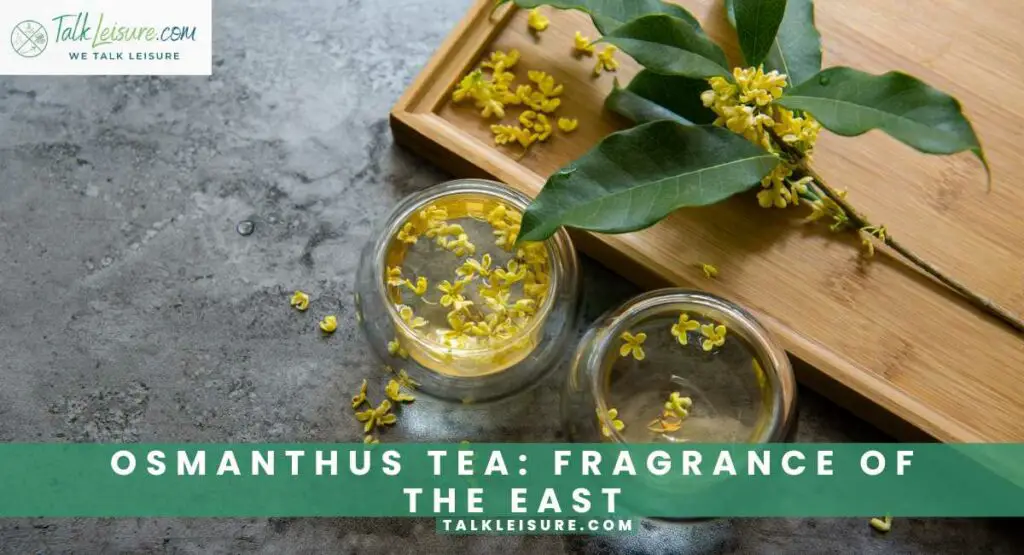
Traditional Uses and Cultural Significance:
Osmanthus tea, derived from the tiny, golden flowers of the Osmanthus fragrans plant, holds a special place in Chinese tea culture. Revered for its sweet fragrance, this tea is often associated with auspicious occasions and celebrations.
Flavor Profile and Aroma:
The golden-hued infusion of osmanthus tea carries a sweet, apricot-like aroma and taste. It’s a sensory delight, offering a subtle and elegant experience. Osmanthus tea is a symbol of beauty and harmony, inviting you to savor the essence of the East.
Wellness Benefits:
In addition to its delightful taste and aroma, Osmanthus tea is believed to have health benefits, including potential stress-relieving properties. It’s not just a tea; it’s a cultural journey and a fragrant tribute to well-being.
Butterfly Pea Flower Tea: Nature’s Color Palette
Origins and Cultivation:
Butterfly Pea Flower Tea, crafted from the vibrant blue petals of the Clitoria ternatea plant, adds a touch of magic to the world of floral infusions. Native to Southeast Asia, this tea is known for its mesmerizing, color-changing properties.
Floral Notes and Flavor Combinations:
As the blue petals unfurl in hot water, they release a subtle earthy flavor with floral undertones. What makes this tea truly enchanting is its ability to change color with the addition of acidic ingredients like lemon or lime, creating a captivating visual and taste experience.
Wellness Benefits:
Beyond its visual appeal, Butterfly Pea Flower Tea is believed to offer antioxidant properties and potential benefits for skin health. Step into the realm of natural beauty and vibrant hues with each sip.
Calendula Tea: Sunshine in a Cup
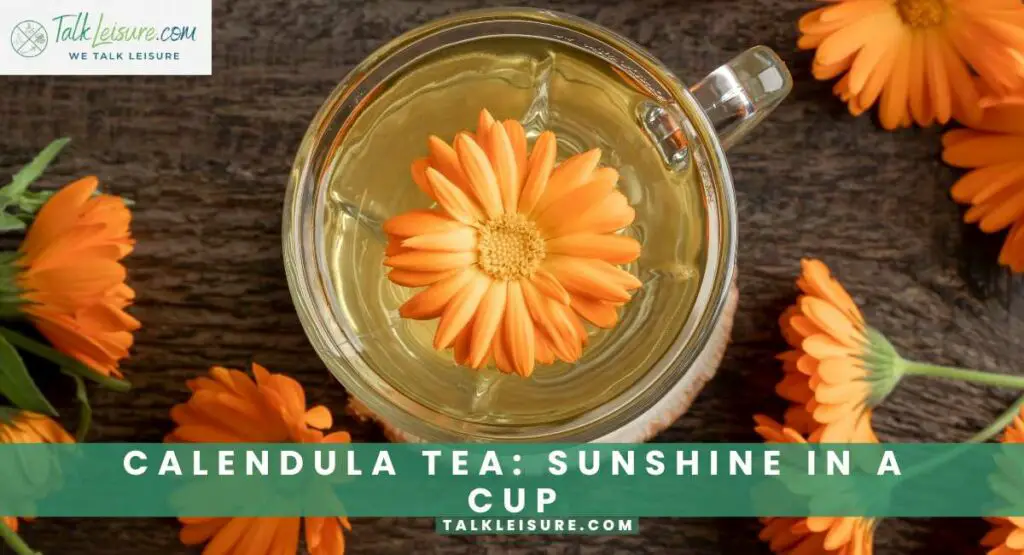
Origins and Cultivation:
Calendula, also known as marigold, graces gardens with its vibrant orange and yellow blossoms. Calendula tea, made from the dried petals of the Calendula officinalis plant, brings the warmth of sunshine to your teacup.
Flavor Profile and Aroma:
The infusion of calendula petals yields a mildly earthy and slightly bitter taste, reminiscent of the sunny fields where these flowers bloom. The aroma is subtle yet comforting, inviting you to bask in the glow of nature’s golden elixir.
Wellness Benefits:
Calendula tea is celebrated for its potential anti-inflammatory properties and is often used in traditional herbal remedies. Sip on this golden infusion for a dose of natural radiance and well-being.
As we expand our floral repertoire, each of these teas unfolds a unique chapter in the grand narrative of botanical delights. Whether you’re seeking tranquility, vibrancy, or a visual spectacle, there’s a floral tea waiting to captivate your senses. Cheers to the diverse and blooming world of floral infusions!
How to Brew the Perfect Cup
In the enchanting world of floral teas, brewing is an art—a delicate dance that coaxes out the nuances of each petal and leaf, transforming a mere infusion into a symphony of flavors and aromas.
Whether you’re indulging in the timeless elegance of jasmine, the romantic allure of rose, or the gentle bloom of chrysanthemum, mastering the art of brewing is key to unlocking the full potential of these botanical elixirs.
General Guidelines for Brewing Floral Teas
The Canvas: Quality Water
Start with the canvas of your tea painting—the water. Opt for filtered or spring water to ensure purity and let the floral notes take center stage. Water quality plays a crucial role in preserving the delicate flavors of floral teas.
The Dance of Leaves: Measure Right
Precision is key. Measure your tea leaves or petals accurately to strike the perfect balance. Too much can overpower, while too little might leave your cup lacking in the vibrant infusion you desire.
Temperature Matters: Gentle Heat
Floral teas are delicate, and so is the temperature dance. Steer clear of boiling water, which can scald and overwhelm the delicate nuances. Aim for temperatures between 175°F to 185°F (80°C to 85°C) to coax out the gentle, layered flavors.
Patience Rewarded: Steeping Time
Patience is a virtue in the world of floral teas. Allow the petals or leaves to unfurl and release their essence. The recommended steeping time often ranges from 2 to 5 minutes, but consult the specific guidelines for each tea to ensure perfection in every cup.
Brewing Tips for Specific Floral Teas
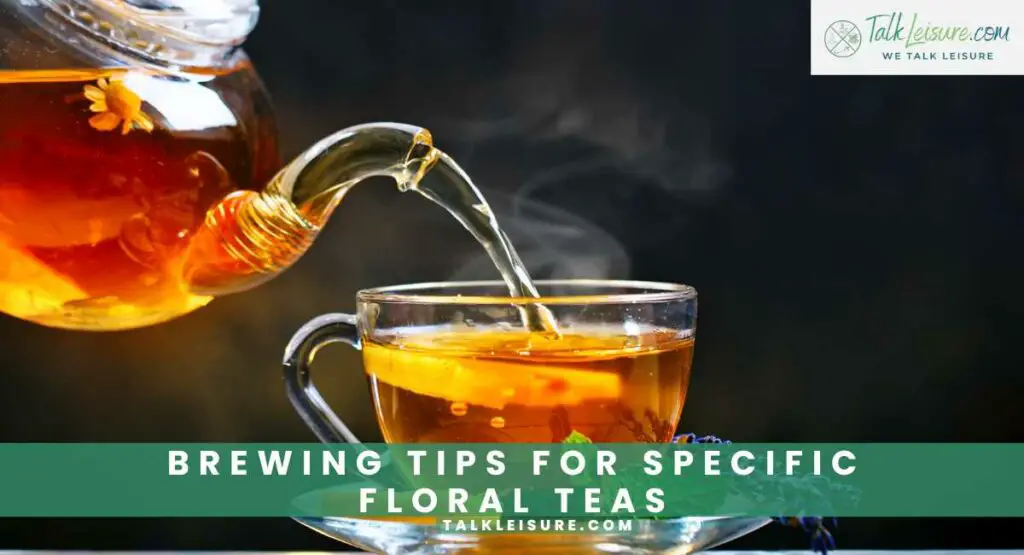
Jasmine Tea: Scented Serenity
Brewing Method: Opt for loose-leaf jasmine tea for the most authentic experience. Use about one teaspoon of leaves for every 8 ounces of water.
Water Temperature: Aim for around 175°F (80°C) to preserve the delicate nature of jasmine.
Steeping Time: Let the magic unfold for 2 to 4 minutes. The result is a cup that captures the essence of a tranquil jasmine-scented garden.
Rose Tea: Elegance in Bloom
Brewing Method: For loose-leaf rose tea, a teaspoon per cup is a good starting point. If using petals, adjust based on personal preference.
Water Temperature: Keep the water temperature between 185°F to 200°F (85°C to 93°C) to extract the subtle sweetness of the rose.
Steeping Time: Allow 3 to 5 minutes for the petals to weave their floral tapestry, creating a cup that whispers tales of romance.
Chrysanthemum Tea: Blooms of Wellness
Brewing Method: Use dried chrysanthemum flowers for authenticity. One to two teaspoons per cup is a good measure.
Water Temperature: Keep it at a temperature around 180°F (82°C) to preserve the tea’s delicate nature.
Steeping Time: Let the flowers steep for 3 to 5 minutes, allowing the light, refreshing flavors to unfold. This is your ticket to a cup of wellness.
Mastering the art of brewing floral teas is a journey of discovery and refinement. These guidelines and specific tips for jasmine rose, and chrysanthemum teas serve as your compass, guiding you to a cup that not only delights your senses but transports you to the very essence of each bloom.
So, go ahead, embark on this floral brewing adventure, and let each sip be a brushstroke on the canvas of your tea experience.
Conclusion
In the tapestry of floral teas, we’ve uncovered a symphony of flavors, aromas, and wellness benefits. From the serene jasmine to the elegant rose and the refreshing chrysanthemum, each cup tells a story. Remember, the world of chamomile, lavender, hibiscus, osmanthus, butterfly pea flower, and calendula awaits your exploration.
So, grab your favorite mug, embark on this aromatic journey, and let the petals unfurl in your cup. Share your floral tea adventures, for in this diverse world, every sip is a chapter waiting to be written. Cheers to the blooming beauty of floral teas and the tales they whisper in every infusion!
Frequently Asked Questions
- What does jasmine tea symbolize?
Jasmine tea symbolizes purity, grace, and elegance. In various cultures, it is associated with love, beauty, and spiritual awakening. The delicate fragrance of jasmine flowers infused in tea represents harmony and balance. Sipping jasmine tea transcends a mere beverage; it becomes a ritual, an aromatic journey inviting tranquility and connection with nature’s timeless beauty.
- Why is chrysanthemum tea popular?
Chrysanthemum tea’s popularity is rooted in its delicate flavor, cultural significance, and potential health benefits. Widely enjoyed in Asian cultures, it offers a light, floral taste and is cherished for its refreshing qualities. With a history of use in traditional medicine, chrysanthemum tea is celebrated for its potential immune-boosting properties, making it a sought-after brew for both its taste and wellness benefits.
- Is chrysanthemum a green tea?
Chrysanthemum tea is not inherently a green tea. It is typically made by infusing dried chrysanthemum flowers in hot water. However, it is common to find blends where chrysanthemum flowers are combined with green tea leaves, creating a delightful fusion. The resulting beverage retains the light and floral characteristics of chrysanthemum while incorporating the earthy notes of green tea.








